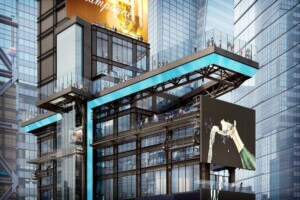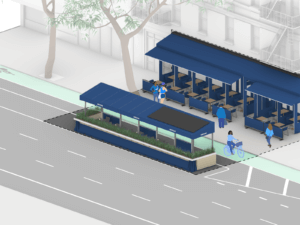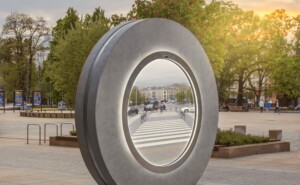Vultures are unduly despised, treated as if they invented death; instead, they might be death’s artisans, transforming what’s gone into what’s still to come. Black vultures are projections, abstracted like so much of blackness into metaphor: their plumage mistaken for voids but, if you look, are polychromatic spans; their relative quiet judged as a creeping doom when, perhaps, they’re just keeping their joyful hisses and grunts to themselves.
There are black vultures gathering on the grounds of the New York Botanical Garden (NYBG) this summer. They’ve sprung from the hands and heart of Ebony G. Patterson, the first visual artist hosted in a residency at the NYBG, for an exhibition called …things come to thrive…in the shedding…in the molting…. The life-size birds group together in what experts call “wakes,” but look more like galaxies as they glitter among the garden beds of red and purple blossoms. An accomplished painter and installation artist, Patterson has been working in horticulture for the past few years; here, she unearths new knowledge of race, gender, and colonialism from her long immersion in the NYBG’s collections, and lets it bloom.
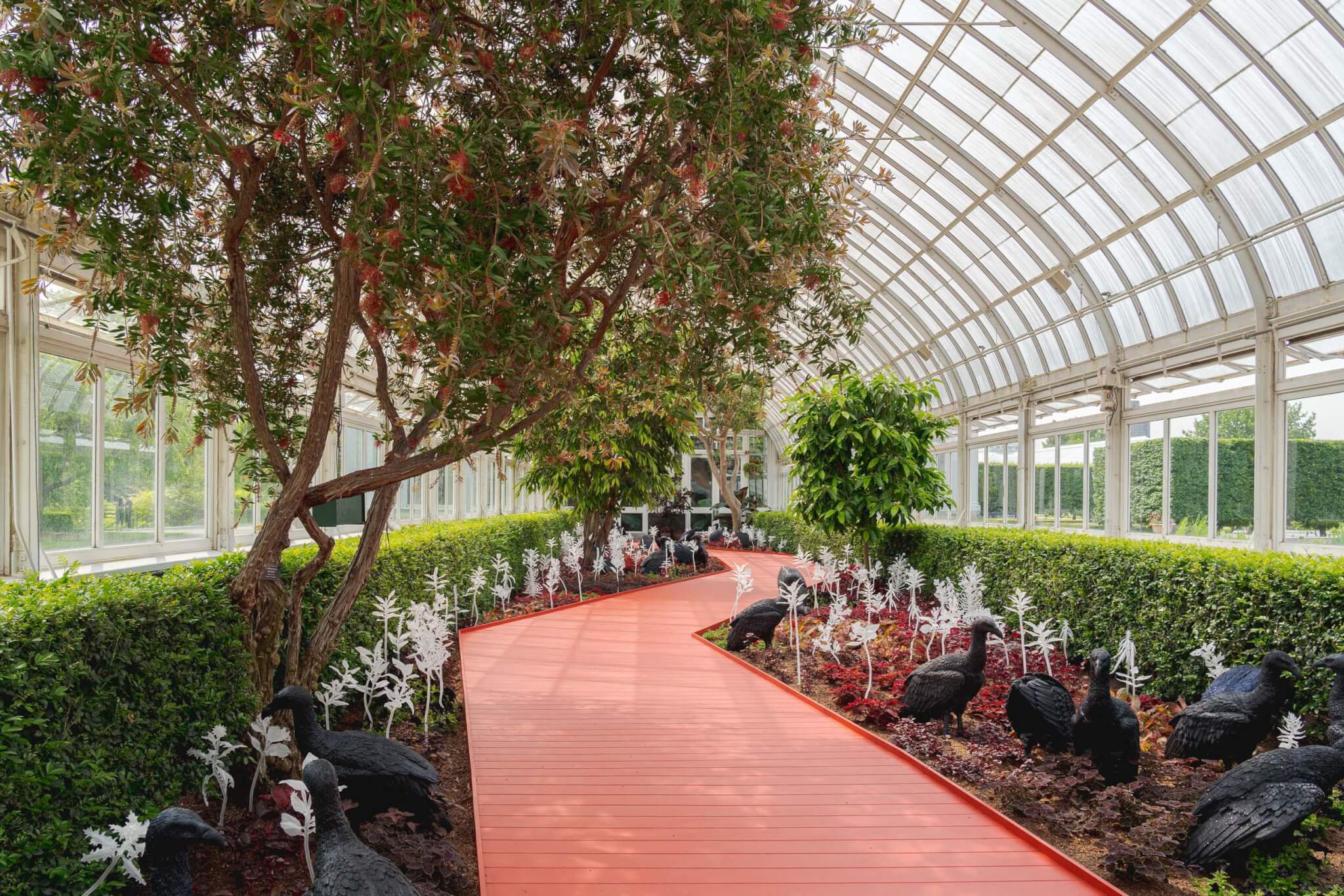
Viewers might wonder if they’re the carrion as they wander through the gardens. But who feels safe in public spaces like these, with manicured lawns and patrolling guards? Who are the threats here? Patterson’s work treads carefully, if not subtly, through this territory. She gathers force as the work enters the first indoor structure, the Enid A. Haupt Conservatory, a landmarked greenhouse styled like an Italian Renaissance palace and commissioned by robber baron trio Andrew Carnegie, J.P. Morgan, and Cornelius Vanderbilt. Trails of verdant, botanical splendors unfurl, all kept safe under the crystal dome of the conservatory; it’s a testament to what nature can do when cared for.
And what happens when it’s abandoned, or killed? In the NYBG’s William and Lynda Steere Herbarium, Patterson found relics of extinct plants, sometimes the only proof the species ever existed. During a press preview, Patterson spoke among the garden’s wake. “What does it mean to think about those gardens that are not giving consideration for the possibility of care,” she asked, “but thrive regardless, because that’s what happens in nature? Things live on.” After collecting those proofs, Patterson cast them in glass. She planted them among the living. They glow like ghosts, or angels, or ideas.
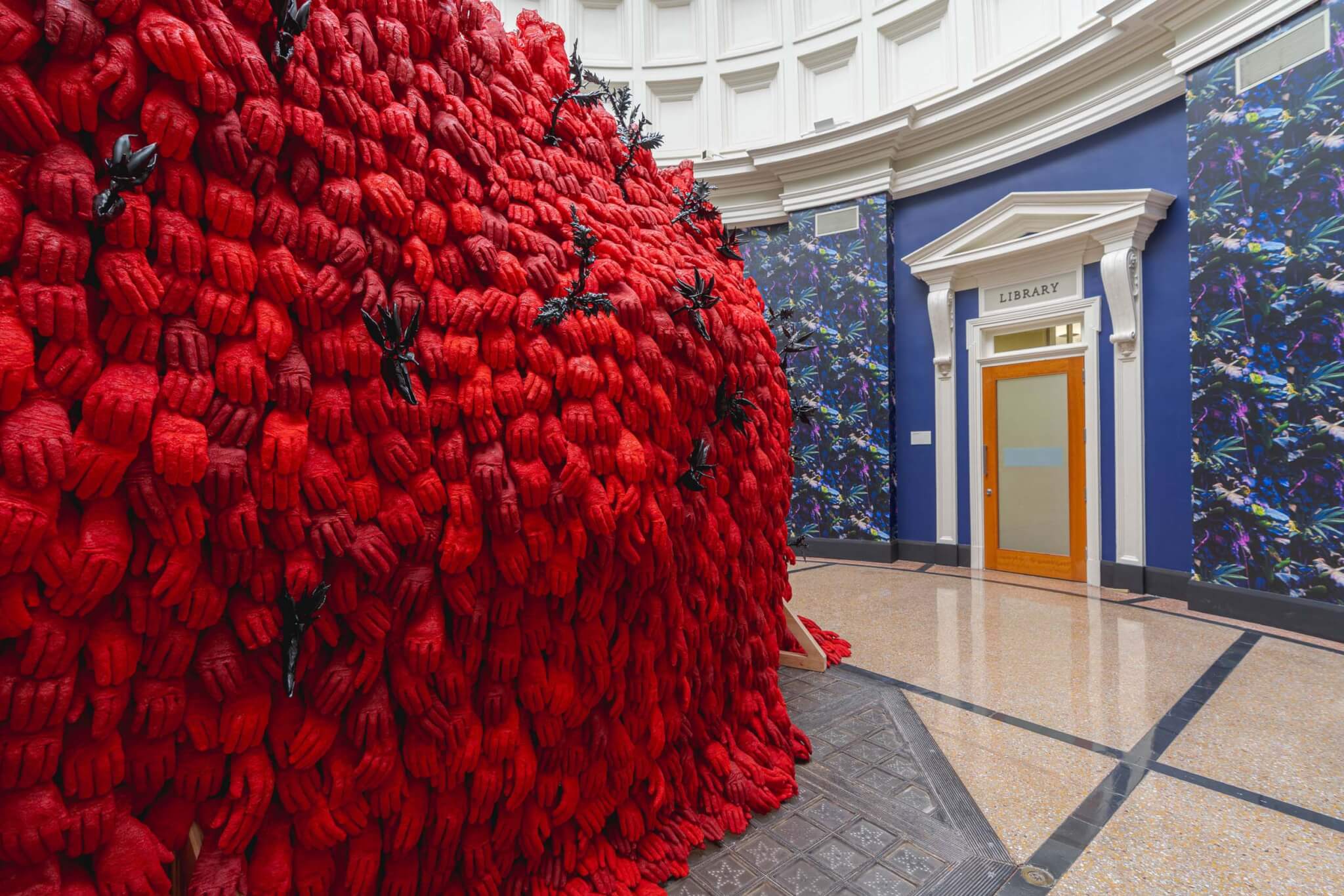
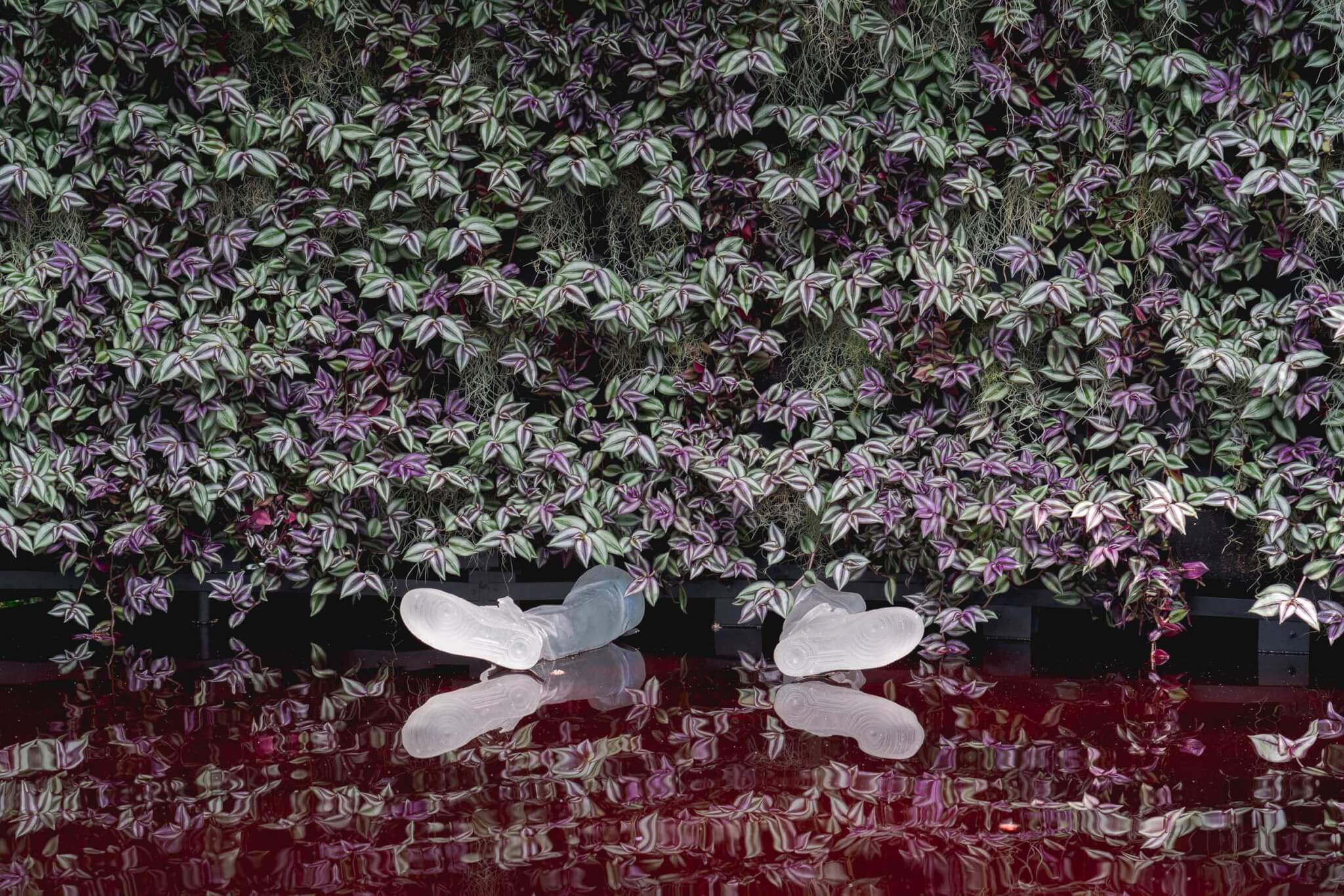
Across the lawn in the Mertz Library, Patterson has planted films, references, illustrations, and a monumental sculptural mound of bloody-handed rubber gloves. But the heart of the installation is back in the conservatory, where a sculpted peacock sits as a proud summit of performative masculinity. Yet its tail has upturned and collapsed. It might be molting, or worse. At the preview, Patterson spoke of seeing an all-white leucistic peacock in Jamaica. “Thinking about this incredibly, beautiful bird with all its pageantry, to see it at its ugliest moment, remained with me,” she said. “For me, unpacking the garden in a moment of molting, in a moment of transformation, is about witnessing our collective ugliness and noting that even in the ugliness beauty is possible.”
Beneath it, more vultures dip their beaks into a pool stained a sanguine, startling, deep blood-red. The peacock’s fan crushes a pair of cast-glass legs, unworkable under the weight but bathed in tender, natural light. Crawling tendrils of plantings form a kind of tombstone. Capitalism reaps what it sows. What can we, like vultures, make of it?
Jesse Dorris is a writer in New York City and hosts Polyglot, a radio show on WFMU.








